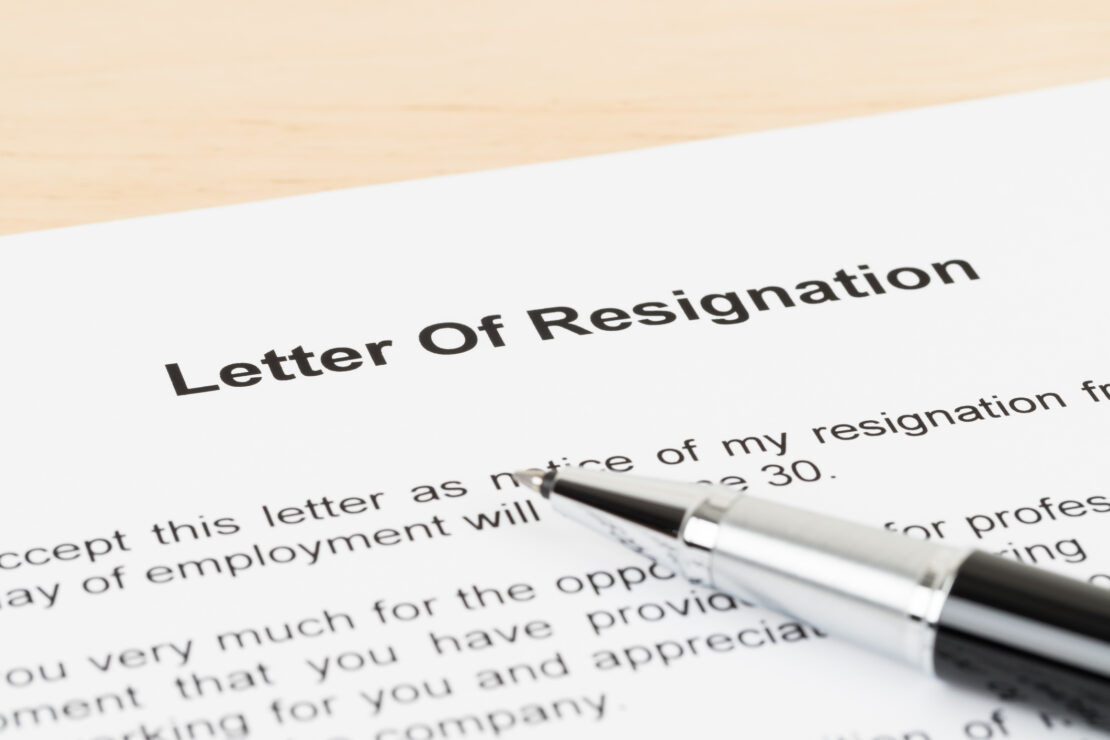How to Write a Professional Resignation Letter
At some point in your professional life, you’ll likely have to make the big decision to leave a job, and with that likely comes some form of resignation letter. Most of us will have learnt the conventions of letter writing at school, but how does a resignation letter differ from a letter you’d send to a friend or relative?
Surprisingly, there’s more to a resignation letter than the simple act of telling your line manager that you’re leaving, and you must take care to ensure that the relationships you’ve cultivated during your employment are not tarnished once you decide to resign.
Preparing to write your resignation letter
Before you sit down and write your resignation letter, consider how your mood might affect the way that you’re writing. A resignation should be carefully considered and not emotionally driven, so you should write the letter when you’re in a good frame of mind to avoid your grievances into your resignation letter.
Make sure that you have the correct information to write the letter, including your notice period & leaving date, and who is the correct person to address the letter to.
How to write a professional resignation letter

So you’ve gathered the information that you need, you’re sat calmly at your desk ready to type, but you’re not quite sure where to start? Rest assured, we’ve got some simple tips to get you started and what to remember when you’re typing. Feel free to take notes to refer to when you’re eventually putting pen to paper.
Tone of voice
Keep in mind your tone of voice. This isn’t a diary, it’s a resignation letter and so should be written with a professional tone of voice. This letter is designed to convey information rather than convey emotion, so use to succinct language.
Keep it short
Even if you’re a fantastic writer, a resignation letter should be short and sweet, delivering the necessary information in an easy-to-swallow format.
Give thanks
Despite writing a resignation letter, you’re probably grateful for the opportunity to work and open new doors that you’re about to walk through, don’t forget to be appreciative throughout.
Offer support
Offering any support, you can during the remainder of your employment is a polite and cordial way to leave a company, ensuring that you leave on a high note. This could be offering to train your replacement or writing a handover document for your successor.
What to include in a resignation letter

We now know the general tone we’d like to take, so let’s dive into the specifics of what to include in the letter.
Your details
For your letter to be effective, the recipient must know who it’s coming from. In the letter include your name, job title, phone number and email address as a matter of courtesy.
Date of letter
Dating a letter allows your addressee to respond in a timely manner if they’d like to. Remember to hand over the letter with today’s date on, particularly if you’ve been sat on it for a while.
Addressee information
To make sure that the letter reaches the right person, make sure that it is addressed to the correct person at the top of the letter and on the envelope that you may put it in.
Notice of formal resignation
The bulk of your letter should be your notice of formal resignation. This is where you tell your employer that you’ll be leaving your position. It should read something like this:
Please accept this letter as my formal resignation of the position as [job title] with [company name].
Last working day as per notice period
Check your company handbook to determine how long your notice period, if your notice period is 2 weeks, then you should make sure that your last working day is in at least two weeks, but you can make it longer depending on when your next source of employment is due to start.
Thanks and support
Lastly, offer your line manager, and the company your thanks for the opportunity to progress and develop professionally. Regardless of your enjoyment of the job, you should remain professional so as to not burn bridges with your colleagues.
How to deliver your resignation letter

Now that you’ve written a professional letter of resignation, the last step is to deliver it promptly to your line manager so that the ball can be set rolling.
When delivering a resignation letter, your line manager may wish to have a conversation with you to discuss your reasons or future plans. For this reason, we’d recommend scheduling an informal meeting with your line manager to answer any questions they may have and make sure that you are both on the same page.
Once the letter has been delivered and you’ve spoken to your line manager, you must now begin the process of wrapping up any tasks, making sure that your team can continue their jobs seamlessly even after you’ve resigned.
You should now know the steps needed to write and deliver an effective, concise and professional resignation letter. In your professional life, writing a great resignation letter is a valuable skill to possess, along with cover letters and doing well in a job interview.
SEFE wish you all the best in your new job, and if you’d like to know how to have an impact in your new job, check out our blog on the topic.
To find out more about careers at SEFE please visit our homepage.
The views, opinions and positions expressed within this article are those of our third-party content providers alone and do not represent those of SEFE. The accuracy, completeness and validity of any statements made within this article are not guaranteed. SEFE accepts no liability for any errors, omissions or representations.







